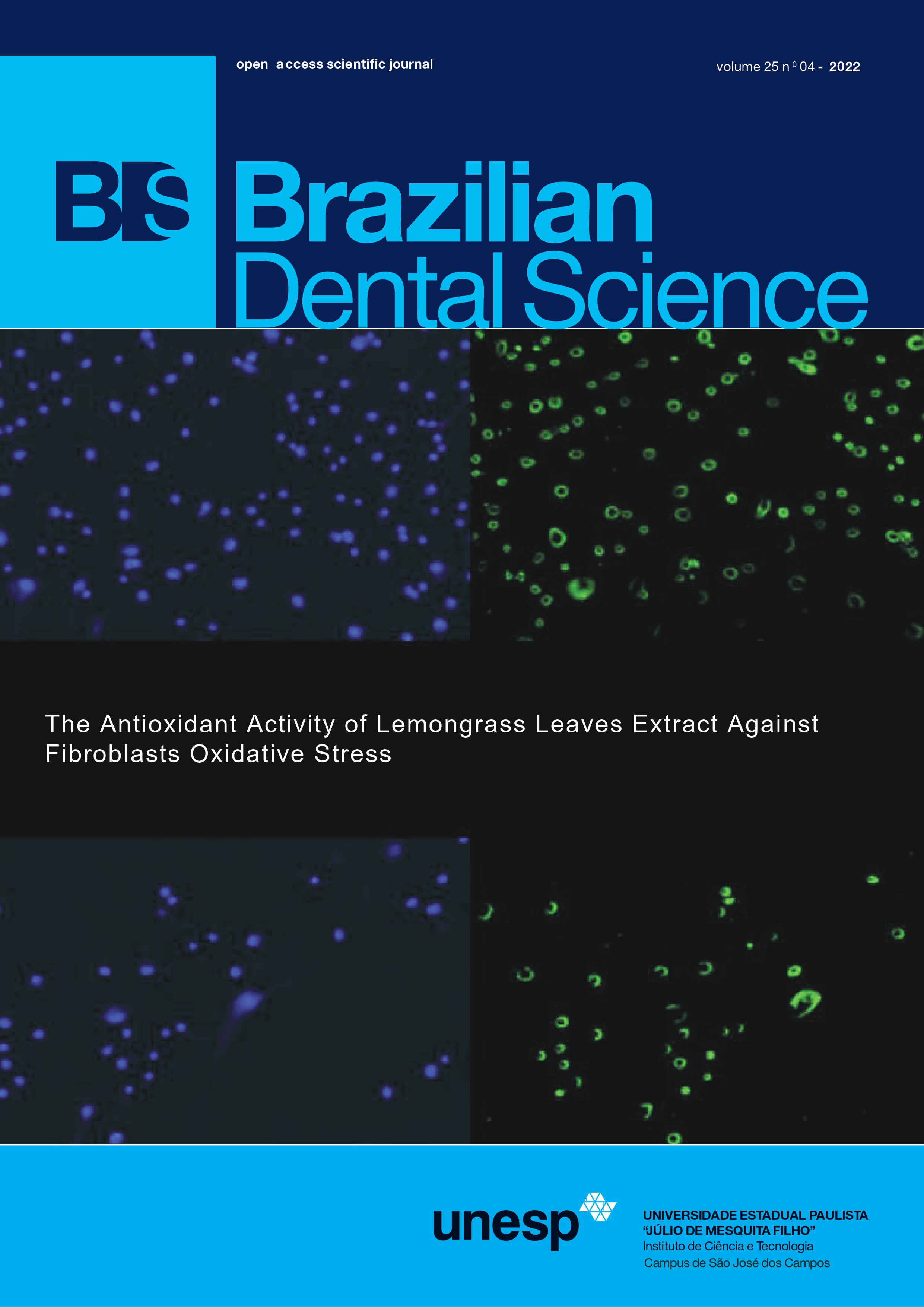Effect of desensitizing dentifrices on eroded dentin wettability
DOI:
https://doi.org/10.4322/bds.2022.e3432Abstract
Objective: To analyze the wettability on the surface of eroded dentin in teeth submitted to abrasive wear with
desensitizing dentifrices. Material and Methods: Bovine dentin specimens were polished and immersed in 10 mL
of citric acid (pH=3.2) for 2 h. The eroded specimens were submitted to mechanic brushing according to the 4
dentifrices adopted: Colgate Total (control); Colgate Sensitive Pro-Relief; Sensodyne Repair & Protect; or Sensodyne
Rapid Relief. Afterwards, it was conditioned in 37% aqueous phosphoric acid solution. Wettability of 80 specimens
(n=10) brushed for 7 or 21 days was evaluated by measuring the contact angle between the dentin surface and a
drop of the adhesive Single Bond Universal (3M) with a goniometer. Changes in the surface morphology of 12
specimens (n = 3) brushed for 21 days were followed by confocal laser scanning microscopy (CLSM). Data were
analyzed by two-way ANOVA and Tukey test (p > 0.05). Results: Groups treated with desensitizing dentifrices
did not differ significantly (p < 0.05). Surface treatment and abrasive wear did not interact significantly (p < 0.05).
Brushing along 7 days gave the smallest contact angle value (p > 0.05). CLSM images showed morphological changes
for all the groups. Conclusion: The desensitizing dentifrices did not interfere in eroded dentin wettability after
brushing along 7 or 21 days. Brushing with any of the dentifrices along 21 days promoted open dentinal tubules.
KEYWORDS
Dentifrices; Desensitizing; Toothbrushing; Dentin; Wettability.
Downloads
Downloads
Published
How to Cite
Issue
Section
License
Brazilian Dental Science uses the Creative Commons (CC-BY 4.0) license, thus preserving the integrity of articles in an open access environment. The journal allows the author to retain publishing rights without restrictions.
=================




























